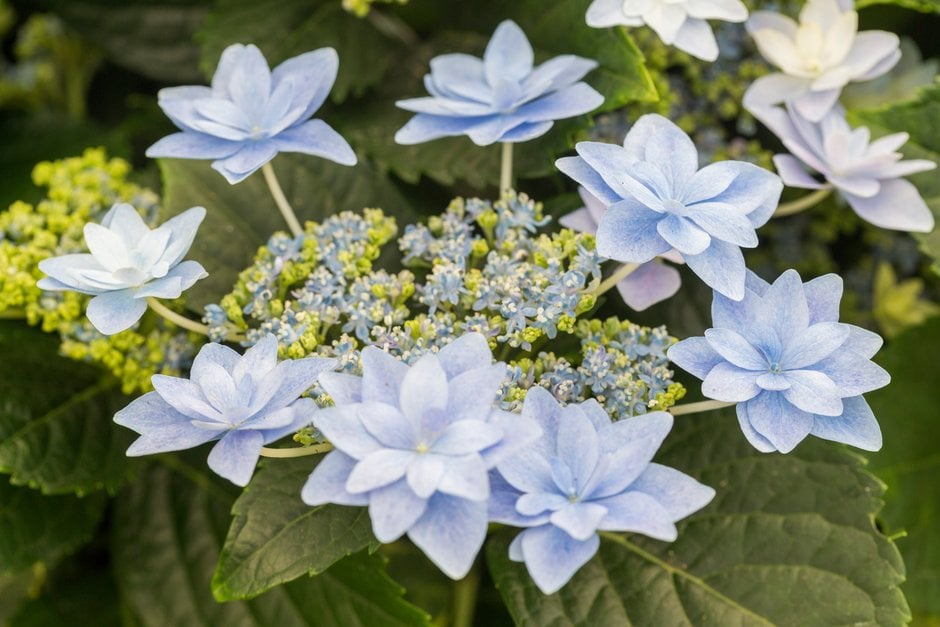Hydrangea macrophylla 'Jōgasaki' (L/d)
hydrangea 'Jōgasaki'
A bushy, deciduous, rounded shrub, to 1.5m tall and wide, with ovate, glossy, dark green leaves. Flattened clusters of pink or lavender-blue flowers form flowerheads 7-12cm across; the double ray florets are held in a ring around the fertile flowers on long, stiff stalks
Synonyms
Hydrangea macrophylla 'Hovaria Fireworks Blue'Hydrangea serrata 'Jogasaki'
see moreHydrangea macrophylla Fireworks Blue
Hydrangea macrophylla Fireworks Pink
Hydrangea macrophylla Elleair Anniversary
Size
Ultimate height
1–1.5 metresTime to ultimate height
5–10 yearsUltimate spread
1–1.5 metresGrowing conditions
Moisture
Moist but well–drainedpH
Acid, Alkaline, NeutralColour & scent
| Stem | Flower | Foliage | Fruit | |
| Spring | Green | |||
|---|---|---|---|---|
| Summer | Blue Pink | Green | ||
| Autumn | Green | |||
| Winter |
Position
- Partial shade
Aspect
North–facing or East–facing or South–facing or West–facing
Exposure
Sheltered Hardiness
H5Botanical details
- Family
- Hydrangeaceae
- Native to GB / Ireland
- No
- Foliage
- Deciduous
- Habit
- Bushy
- Potentially harmful
- Skin allergen. Wear gloves and other protective equipment when handling. Pets (dogs, cats): Harmful if eaten. For further information and contact numbers regarding pets, see the HTA guide to potentially harmful plants
- Genus
Hydrangea can be deciduous or evergreen shrubs, or self-clinging climbers, with flowers in clusters usually comprising both small fertile and more showy sterile flowers; often good autumn colour
- Name status
Accepted
- Horticultural Group
- Lace cap hydrangeas are compact deciduous shrubs with broadly ovate leaves and flat or gently domed clusters of small fertile flowers, with showy sterile flowers around the margin
How to grow
Cultivation
Grow in any moist but well-drained soil in partial shade or grow in sun if soil remains reliably moist. Improve chalky soils with organic matter to support good growth. See shrubby hydrangea cultivation for further advice
Propagation
Propagate by softwood cuttings in early summer or hardwood cuttings in winter
Suggested planting locations and garden types
- City and courtyard gardens
- Cottage and informal garden
- Patio and container plants
- Cut flowers
- Flower borders and beds
Pruning
See pruning group 4 for further advice and video guide
Pests
May be susceptible to aphids, capsid bug, hydrangea scale and vine weevil
Diseases
May be susceptible to a leaf spot, powdery mildews, grey moulds (Botrytis) and honey fungus (rarely)
Love gardening
Sign up to receive regular gardening tips, inspiration, offers and more
View our Privacy Policy
Get involved
The Royal Horticultural Society is the UK’s leading gardening charity. We aim to enrich everyone’s life through plants, and make the UK a greener and more beautiful place.
